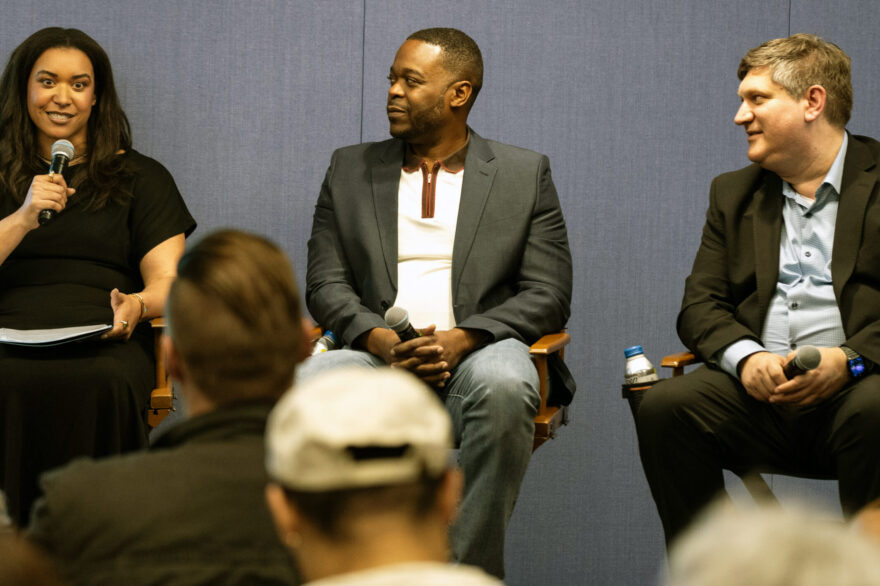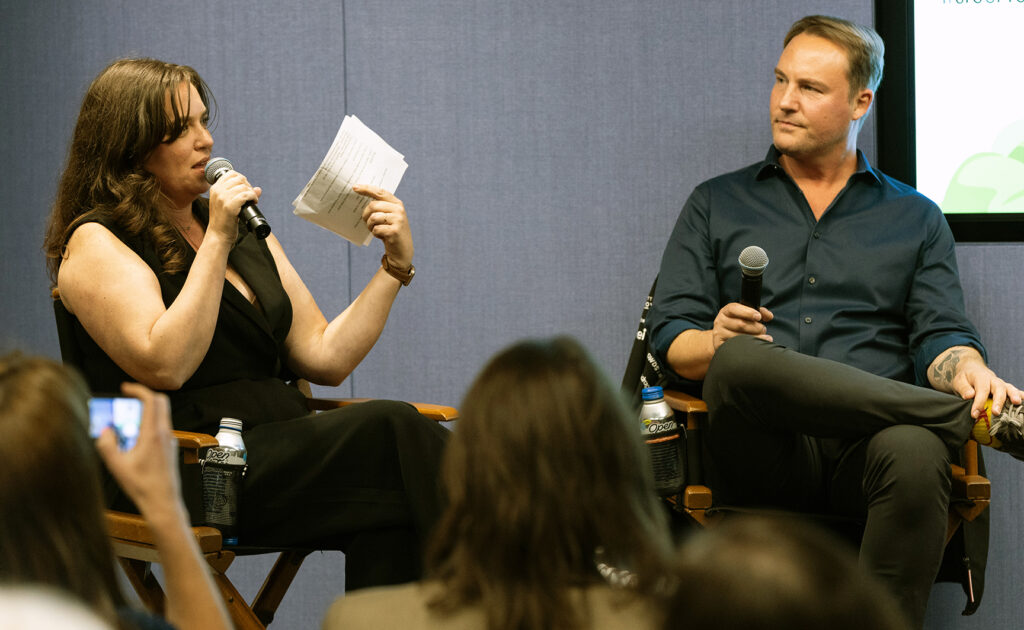Sleepless in Hollywood: Anxiety, Insomnia and the Truth About Sleep Disorders
Writers Guild of America West

With apps, wearables and “smart” beds either analyzing, scheduling, supporting or tracking the details of their sleep—right down to the amount of time spent during the REM* stages—most Americans should be getting plenty of solid rest in a Golden Age of Slumber.
Yet Project Sleep, a nonprofit dedicated to raising awareness about sleep health and disorders, reports that nearly 70 percent of adults report insufficient sleep or rest at least once a month, and 11 percent report insufficient sleep every day of the month.
Likewise, about 30 percent of high school-age teenagers sleep less than the recommended eight to nine hours a night—an insufficient amount for this age group given their high risk of suicide, obesity, depression and low grades because of it.
Insufficient sleep costs the United States $411 billion annually, according to Project Sleep. Drowsy driving leads to an estimated 100,000 crashes each year, killing an estimated 6,400 people in the U.S. alone, and resulting in more than 71,000 injuries and $12.5 million in damages annually.
Sleep disparities disproportionately affect socioeconomically disadvantaged communities that result in worse sleep health.
Moreover, in the wake of a Covid-19 pandemic that lasted three years (and is still being felt), there now seems to be a never-ending cacophony of daily outrages and looming anxieties.
Is it any wonder we’re being shut out of a healthy amount of shut-eye?
American hustle culture tells us we can power through restless nights and exhausted days, but poor sleep quietly erodes our clarity, creativity and productivity.
Tip sheets: Narcolepsy | Sleep apnea | Sleepless in Hollywood
“Sleepless in Hollywood: Anxiety, Insomnia and the Truth About Sleep Disorders,” a panel event co-sponsored by Hollywood, Health & Society and Project Sleep on March 13 at the WGAW, was a deep-dive discussion about insomnia, sleep apnea and narcolepsy, and how TV storylines can dispel myths about what it takes to get a truly restorative night’s sleep.
Guest speakers included Emmy-winning producer Brent Miller, executive producer of the comedy series Clean Slate (Prime) and a long-time producing partner of Norman Lear; Dr. Christopher Allen, a pediatric neurologist, a sleep medicine doctor and a person living with sleep apnea; Dr. Michael Grandner, a licensed clinical psychologist and director of the Sleep and Health Research Program at the University of Arizona; and Lauren Thomas, a patient advocate living with narcolepsy who’s been involved with Project Sleep for the past five years and serves on its board of directors. The discussion was moderated by Lindsay Scola, a writer, producer and sleep strategist also living with narcolepsy.

“Sleep is foundational,” Dr. Grandner said. “Yet we live in a society that sees sleep as an unproductive use of time.”
Whatever our culture’s attitudes towards a healthy night’s rest, between 50 to 70 million Americans have a chronic sleep disorder—often undiagnosed and untreated—that actually affects their sleep and wakeful periods:
- Narcolepsy—A neurological condition that impairs the brain’s ability to regulate the sleep-wake cycle, often caused by low levels of hypocretins, a brain neurotransmitter responsible for such regulation. It’s treatable, but there is no cure. Symptoms include excessive daytime sleepiness, cataplexy (sudden muscle weakness triggered by emotions), and hallucinations.
- Sleep apnea—People with sleep apnea have repeated issues with their breathing during sleep. The breathing interruptions could occur as little as five times an hour in mild cases, or hundreds of times throughout the night in severe cases. It’s commonly treated by wearing a CPAP machine, which is a mask that the sleeper wears that pumps continuous air to keep the airway open.
- Insomnia—It is characterized by difficulty falling asleep, waking up frequently during the night, waking up too early, or feeling unrefreshed after waking.
Hollywood has often treated sleep disorders as a trope played for laughs—the character on a date abruptly falling asleep as their head plunges into a bowl of soup or dessert. Narcolepsy, as depicted in film and TV, is so wildly inaccurate that real people living with this disorder assume that what they’re going through couldn’t possibly be narcolepsy because they’ve never fallen asleep in the middle of their tennis serve.
The panel discussion at the WGAW also included a recorded conversation between Al Jean, executive producer and showrunner of The Simpsons, and Julie Flygare, president and CEO of Project Sleep, who discussed an episode centering on Homer being diagnosed with narcolepsy after he’s found sleeping during an electrical explosion at the Springfield nuclear power plant where he works.
Back in 2015, Jean revealed in an interview that the first episode of Season 27 of the show would deal with Homer having the sleep disorder, prompting Flygare to write a blog that raised concerns over whether it would be treated seriously. After reading her article, Jean decided that the show would be modified somewhat.
The resulting episode, “Every Man’s Dream,” is still classic parody (this is The Simpsons, after all): Homer skips picking up his medication for narcolepsy at the local pharmacy and instead visits Moe’s Tavern for a good dose of Duff’s Beer. But the show’s creative team did their research, and the episode subsequently includes current medical knowledge about narcolepsy and its treatment options.
* The Cleveland Clinic defines Rapid Eye Movement (REM) sleep as the stage of sleep where most dreams happen. Its name comes from how your eyes move behind your eyelids while you’re dreaming. REM sleep makes up about 25% of your total time asleep. Your first REM cycle of a sleep period is typically the shortest, around 10 minutes. Each one that follows is longer than the last, up to an hour.
